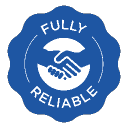

Authentic Product

India's Leading Generic Pharmacy

Secure Payment
By SURGICAL
MRP
₹
128.7
₹102
20.75 % OFF
Check Delivery
--
While a Foley catheter is essential for various medical reasons, it can also cause several side effects. These range from common discomforts to more serious complications. **Common Side Effects:** * **Discomfort and Pain:** You might experience pain, burning, or irritation in the urethra or bladder, especially during catheter insertion or removal. * **Bladder Spasms:** The catheter can irritate the bladder, leading to spasms and a feeling of urgency to urinate, even when the bladder is empty. * **Urinary Tract Infections (UTIs):** Catheters increase the risk of UTIs because they can allow bacteria to enter the bladder. Symptoms include a burning sensation during urination, frequent urination, cloudy urine, and fever. * **Blood in Urine (Hematuria):** Mild bleeding is common, especially after catheter insertion or removal. This usually resolves on its own. * **Leakage Around the Catheter:** Urine may leak around the catheter, especially if bladder spasms are occurring. **Less Common, but More Serious Side Effects:** * **Kidney Damage:** Long-term catheter use can, in rare cases, lead to kidney damage. * **Urethral Injury:** The urethra can be injured during catheter insertion, especially if forced. * **Bladder Stones:** Long-term catheter use can increase the risk of bladder stone formation. * **Allergic Reaction:** In rare cases, individuals may have an allergic reaction to the catheter material (e.g., latex). * **Epididymitis (in men):** Inflammation of the epididymis, a tube located at the back of the testicle that stores and carries sperm. * **Stricture Formation:** Scar tissue can form in the urethra over time, leading to narrowing (stricture) and difficulty urinating after catheter removal. **Important Note:** This is not an exhaustive list. Contact your doctor immediately if you experience any concerning symptoms while using a Foley catheter.

Allergies
CautionUse caution if you have any allergies to Foley Catheter 2 Way.
A Foley catheter 2 Way is a flexible tube inserted into the bladder to drain urine. It has two separate channels: one for urine drainage and another to inflate a balloon that keeps the catheter in place.
A Foley catheter 2 Way is used for urinary retention, after surgery, or to manage urine output in patients with mobility problems or severe illness.
A healthcare professional inserts the Foley catheter 2 Way through the urethra into the bladder. Once in place, the balloon is inflated to keep the catheter from falling out.
The length of time a Foley catheter 2 Way can be left in place depends on the individual's condition. It can be used for short-term or long-term management.
Risks associated with a Foley catheter 2 Way include infection, urethral injury, bladder spasms, and leakage.
To prevent infection, it is important to keep the catheter and surrounding area clean, use proper insertion and maintenance techniques, and replace the catheter as needed.
There may be some discomfort during the insertion of a Foley catheter 2 Way, but it is generally not painful.
Yes, you can bathe normally with a Foley catheter 2 Way. It is important to keep the catheter and surrounding area clean.
A Foley catheter 2 Way can affect sexual activity. It is important to talk to your doctor about what is safe for you.
The size of the Foley catheter 2 Way is based on the patient's urethral size and the reason for catheterization.
A Foley catheter 2 Way is typically inserted by a trained healthcare professional. In some cases, patients may be taught to self-catheterize at home.
If your Foley catheter 2 Way falls out, contact your doctor immediately.
Foley Catheter 2 Ways are made from different materials such as latex, silicone, and silicone-coated latex.
Yes, you can travel with a Foley Catheter 2 Way. It is important to talk to your doctor before traveling and pack all necessary supplies.
You will need soap and water, a clean towel, and a container for emptying the catheter bag.
Best and Affordable medicine Store thank you medkart.
Javed Malek
•
Reviewed on 09-07-2023
(5/5)
Best place for generic medicine at the cheapest rate
PATHAN HUNAIDKHAN
•
Reviewed on 03-04-2022
(5/5)
Great experience. Quality medicine at unbelievable prices.
BRANDON FRASER
•
Reviewed on 07-01-2024
(5/5)
Best medicine 💊
Mohit Tanna
•
Reviewed on 30-01-2024
(5/5)
Quick service, getting discounts on medicines on regular basis
Harshit Patel
•
Reviewed on 12-02-2024
(5/5)
SURGICAL
Country of Origin -
India

MRP
₹
128.7
₹102
20.75 % OFF
Quick Links
Medkart's sole intention is to ensure that its consumers get information that is expert-reviewed, accurate and trustworthy. However, the information contained herein should NOT be used as a substitute for the advice of a qualified physician. The information provided here is for informational purposes only. This may not cover everything about particular health conditions, medicines, generic alternatives, all possible side effects, drug interactions, warnings, alerts, lab tests, etc. Please consult your doctor and discuss all your queries related to any disease or medicine. We intend to support, not replace, the doctor-patient relationship.
10 Lakh+
Happy customers
35000+
Pin-codes Covered
75 Lakh+
Orders Delivered

Authentic Products
All WHO-GMP Certified Medicines
©2025 Medkart Pharmacy. All Rights Reserved